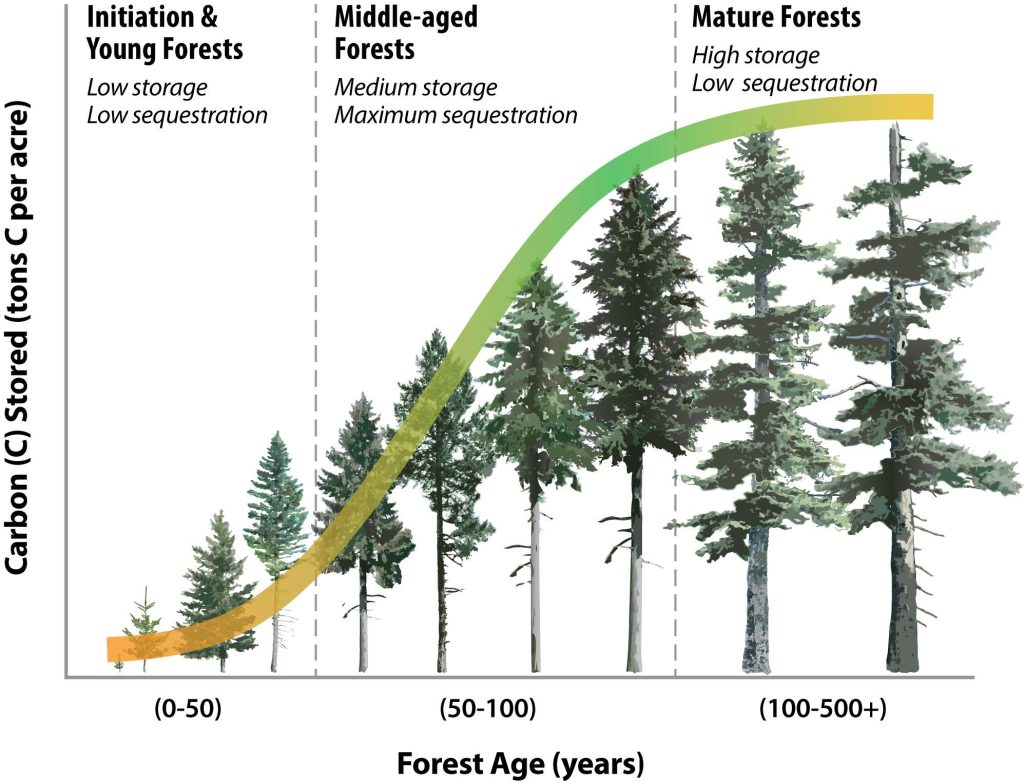Navigating Forest Carbon Markets: A Guide for Landowners
A recent peer-reviewed study was released as a guide for small landowners about forest carbon, offsets and markets conducted by Oregon, Washington, and Idaho State Universities.
Forests play a crucial role in mitigating climate change by capturing and storing carbon dioxide. Forest carbon markets offer opportunities for landowners to manage their forests for enhanced carbon storage while generating income. However, understanding the complexities of carbon markets can be daunting. This article aims to provide a comprehensive overview of forest carbon, carbon markets, and how landowners can participate.
Understanding Forest Carbon Carbon is fundamental to life on Earth, with trees and plants absorbing carbon dioxide during photosynthesis. Forests store carbon in various pools, including aboveground and belowground biomass. However, forests also release carbon through processes like respiration and decomposition.
 Measuring Carbon Carbon sequestration rates vary across forest types and ages. Carbon can be measured through tree inventories and remote sensing technologies like LiDAR. Growth models and regional carbon stocking levels are also used to estimate carbon storage.
Measuring Carbon Carbon sequestration rates vary across forest types and ages. Carbon can be measured through tree inventories and remote sensing technologies like LiDAR. Growth models and regional carbon stocking levels are also used to estimate carbon storage.
Forest Carbon Projects Carbon offset projects involve activities that increase carbon sequestration or reduce emissions. Three recognized project types are afforestation/reforestation, avoided conversion, and improved forest management. Projects must be registered and verified by third parties.
Navigating Carbon Markets Carbon credits generated from offset projects are traded in compliance, voluntary, and incentive markets. Compliance markets, like California’s Cap-and-Trade Program, are regulated, while voluntary markets offer more flexibility. Incentive programs support landowners with financial incentives.
Getting Started with a Carbon Project Before initiating a project, landowners must assess feasibility and eligibility. This involves inventorying and quantifying carbon, developing a forest management plan, and submitting it to a carbon registry. Verification ensures compliance with program standards.
Matching Projects with Objectives Landowners should align their forest management objectives with carbon program requirements. Factors like harvesting plans, forest health, and succession planning must be considered. Developing a forest stewardship plan is recommended before enrolling in a carbon program.
Decision-making Process Landowners should evaluate if a carbon program aligns with their long-term objectives and management plans. Considerations include time commitments, management requirements, and tradeoffs compared to future forest plans.
Participating in forest carbon markets can provide financial incentives for landowners while contributing to climate change mitigation efforts. By understanding the complexities of carbon markets and aligning them with their forest management goals, landowners can make informed decisions to maximize the benefits of carbon projects.
To learn more, please go to OSU Extension Service.
